Reconstructing Depositional Environments of the Sediment Fan in Oxia Planum, Mars
- 1Earth Science and Engineering Department, Imperial College London, London, United Kingdom
- 2School of Physical Sciences, the Open University, Milton Keynes, United Kingdom
- 3Department of Earth Sciences, Natural History Museum, London, United Kingdom
Introduction: The deposits of ancient sediment fans on Mars can provide valuable insights into aqueous history, past climate conditions, and potential habitability. Fans are made of a suite of different sediment transport and depositional regimes including deltas, fluvial fans, alluvial fans, and submarine fans, all of which have been proposed to have been present on ancient Mars [1-3].
Oxia Planum, the landing site for the ESA’s ExoMars Rosalind Franklin rover mission, is hypothesized to have an extensive aqueous history likely recorded in its phyllosilicate-bearing units and complex sediment fan [4, 5]. The fan body originates from Coogoon Vallis in an area named Raetia Palus (Figure 1) [6]. Previous studies have conducted broad-scale investigations of this fan, proposing both fluvial fan and delta depositional models [5, 7-9]. To develop a more robust depositional model for the origin of the sediment fan, we conducted a photogeological investigation of sedimentary strata associated with this fan using orbital images and derived digital terrain models at a 1:1250 digital map scale.
Data: This investigation was undertaken using a newly created High-Resolution Imaging Science Experiment [HiRISE; 10] and HiRISE DTM mosaic with resolutions of 25 cm/pixel and 1 m/pixel, respectively. We also used Colour and Stereo Surface Imaging System [CaSSIS; 12] data products.
The sediment fan and associated units: The sediment fan consists of three key units with different textures and elevations: the ledge-forming unit (LF), overlain by the Medium-light Toned Smooth Unit (MltS), overlain by the Medium-light Toned Rough Unit (MltR) (Figure 2). Unit LF outcrops beneath the sediment fan as a light-toned ledge with curvilinear fractures (Figure 3). Unit MltS sharply overlies Unit LF with a smooth, medium-light toned, cratered surface. This unit exhibits three dark-toned and two lighter-toned layers, and at one location, inclined surfaces that dip to the northwest (Figure 4). A crater is impacted into this unit and filled with light-toned material, which is then unconformably overlain by Unit MltR. Unit MltR has an irregular surface texture characterised by abundant meter-scale blocks or boulders either on top or within the stratigraphy (Figure 4c).
The basement of Raetia Palus consists of four rock units: a raised linear feature-bearing unit (RL) and a light-toned, orthogonally fractured unit (LF), which is overlain by a dark-toned, pitted unit (P) and a sub-polygonally fractured unit (SF) (Figure 2). The sediment fan overlies Unit SF with a distinct bench-shaped contact (Figure 5). Units SF and P have a diffuse boundary, with Unit SF gradually losing fracture definition, gaining light-toned peaks, and pits infilled with dark-toned material that are characteristic of Unit P (Figure 5). Although the contact between Unit P and the sediment fan is often obscured by a mantling unit and was interpreted to onlap onto the sediment fan [5], we interpret that Unit P is a degraded version of Unit SF that may have been shielded from weathering by the overlying sediment fan.
An irregular ridge occurs within Unit MltR (Figure 2) which can be traced into a ridge extending northward for ~14,210 m, a possible reverse thrust fault identified elsewhere in Oxia Planum [11].
Geomorphology of the sediment fan: The sediment fan at Oxia Planum covers a surface area of 40.5 km2 and encompasses seven sedimentary bodies, labelled A through G (Figure 6; elevations -2965 m and -3039 m). Sediment bodies A through F are composed of the MltS unit. Sediment body A outcrops on the western side of the fan extending over the basin with finger-like extensions. Sediment body B partially overlies a crater within sediment-body A. Sediment body C, west of sediment body B, is intersected by wedge-shaped sediment body E containing inclined surfaces. Sediment bodies D and F form isolated, wide ribbon-like protrusions, and their relation to sediment bodies A through E is unknown.
Sediment body G overlies sediment bodies A through F and is composed of the MltR unit. The sediment body extends westward from the channel for ~5 km until terminating over the underlying lobes as an ~5 m thick irregular scarp with linear ridges.
Discussion and conclusions: The seven sediment bodies in Oxia Planum indicate evidence for at least seven different episodes of sediment deposition with two significant hiatuses from the presence of embedded craters between three sediment fan layers. We hypothesise that the sloping depositional surfaces within sediment body E are clinoform candidates which would indicate deposition into a shallow standing body of water. The distinction in shape and morphology of sediment body G, comprising unit MltR, and the hiatus represented by the infilled crater, may indicate a different depositional environment, potentially a fluvial fan or a delta top, overlying pre-existing fan deposits.
Our results also place the sediment fan in a stratigraphic context. We find that the fan post-dates Unit P and Unit SF - components of a dark-toned capping unit previously interpreted as the youngest rock unit in Oxia Planum [5] - but predates extensional faulting [11].
References: [1] Metz et al. (2009). [2] Fawdon et al. (2018). [3] Wilson et al. (2021). [4] Bowen et al. (2021). [5] Quantin-Nataf et al. (2021). [6] Fawdon et al. (2021). [7] Gary-Bicas et al. (2021). [8] Ivanov et al. (2020). [9] Fawdon et al. (2022). [10] McEwen et al. (2007). [11] Woodley et al. (2024). [12] Thomas et al. (2017).
Figures:
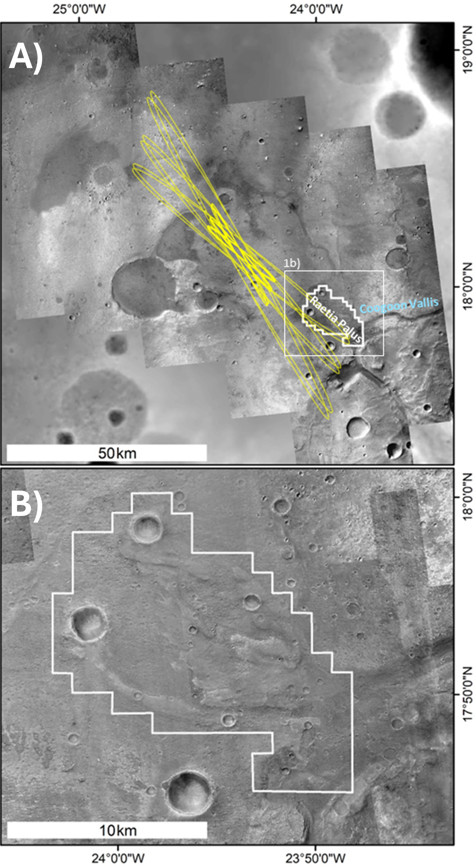
Figure 1: (a) CTX mosaic [6] of Oxia Planum (ExoMars 2028 landing ellipses, yellow; mapping extent, white); (b) HiRISE mosaic of Raetia Palus.
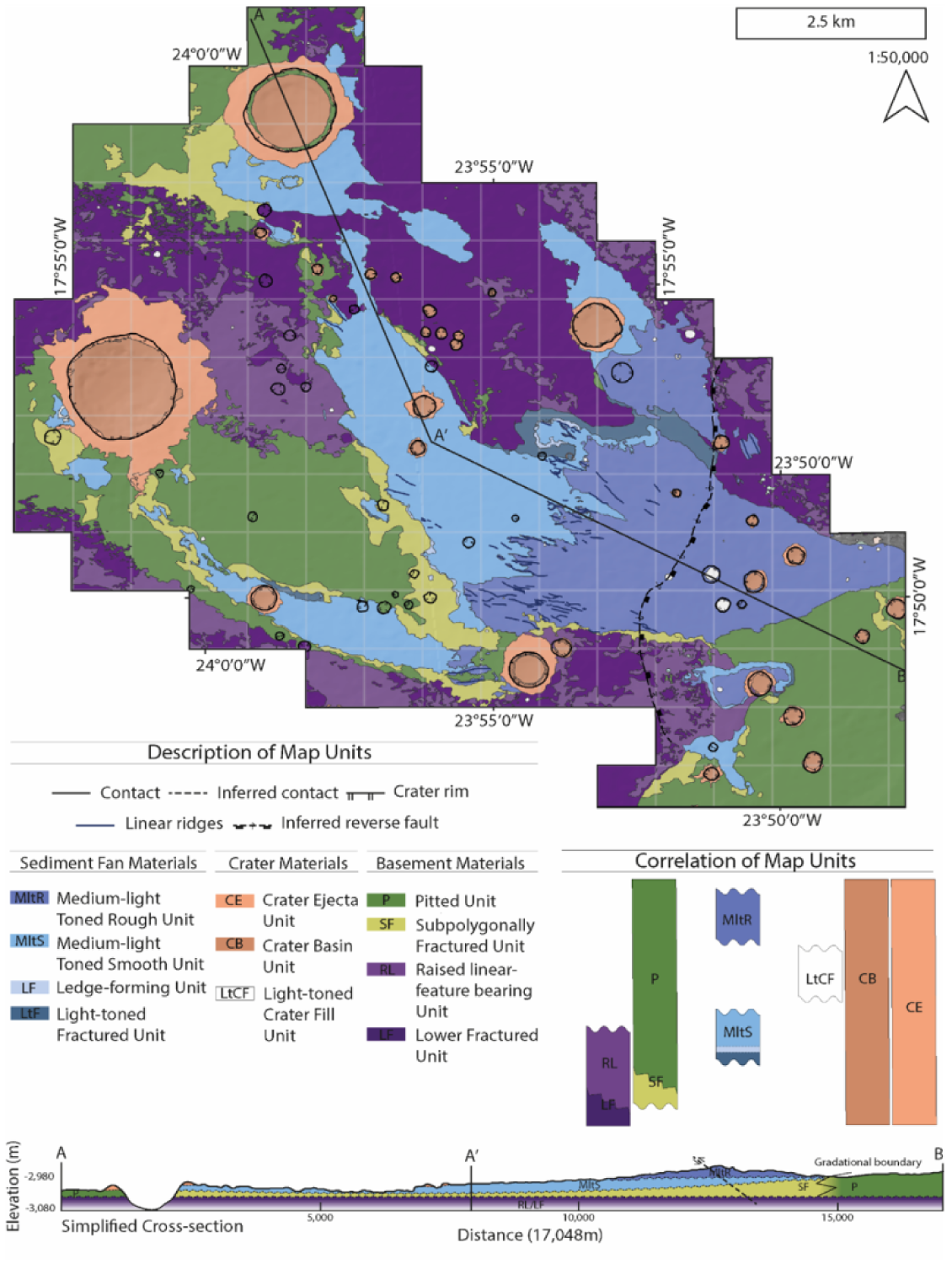
Figure 2: Photogeologic map, cross-section, and correlation of map units of Raetia Palus.
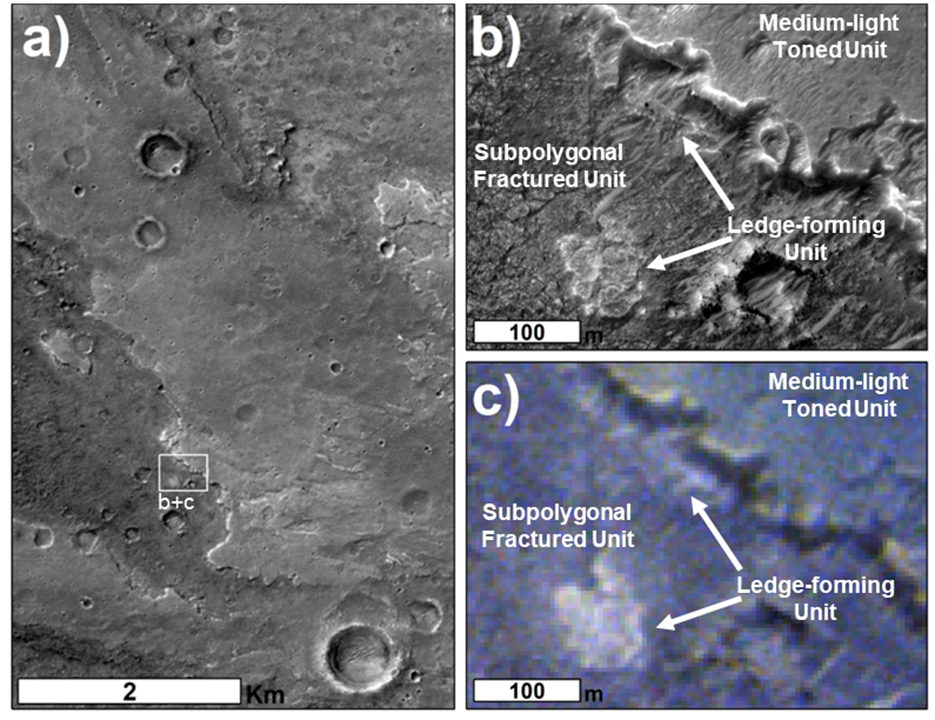
Figure 3: Unit LF: (a) context and a representative outcrop in (b) HiRISE and (c) CaSSIS.
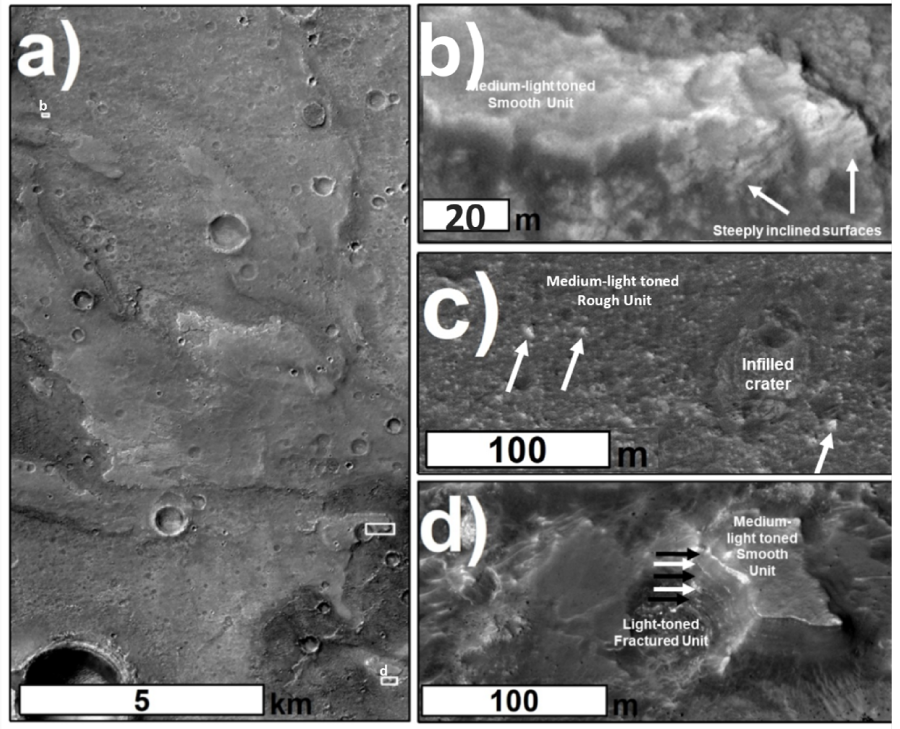
Figure 4: Units MltS and MltR: with (a) context; (b) apparently steeply dipping surfaces of Unit MltS; (c) surficial boulders/blocks of Unit MltR; (d) gently-inclined light-and-dark-toned bands of Unit MltS.
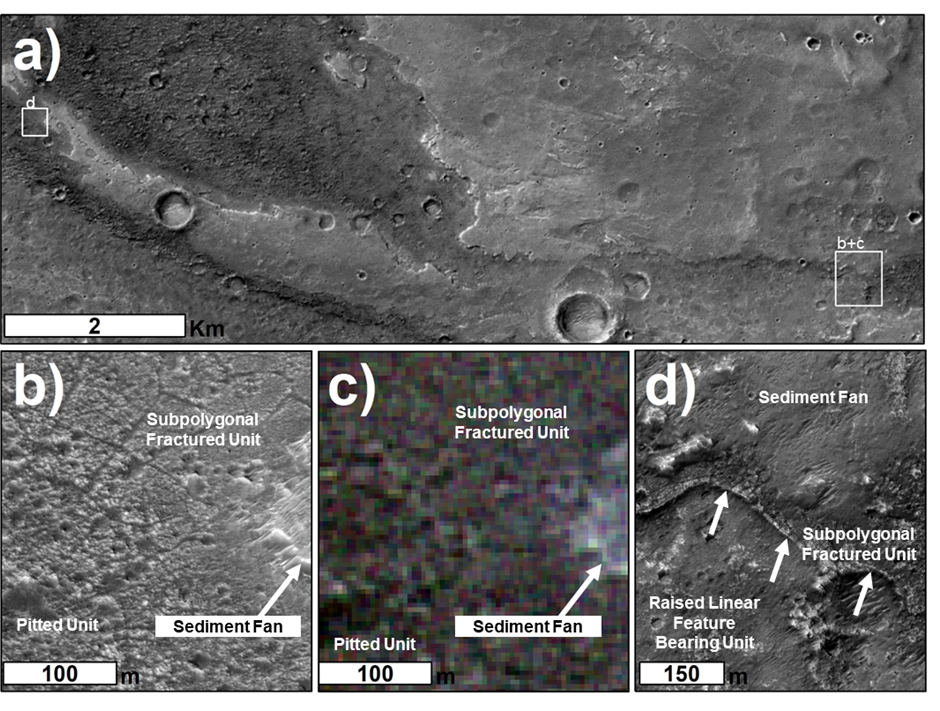
Figure 5: Units SF and P: (a) context; the diffuse boundary in (b) HiRISE and (c) CaSSIS; (d) contact with Unit RL and the sediment fan in HiRISE.
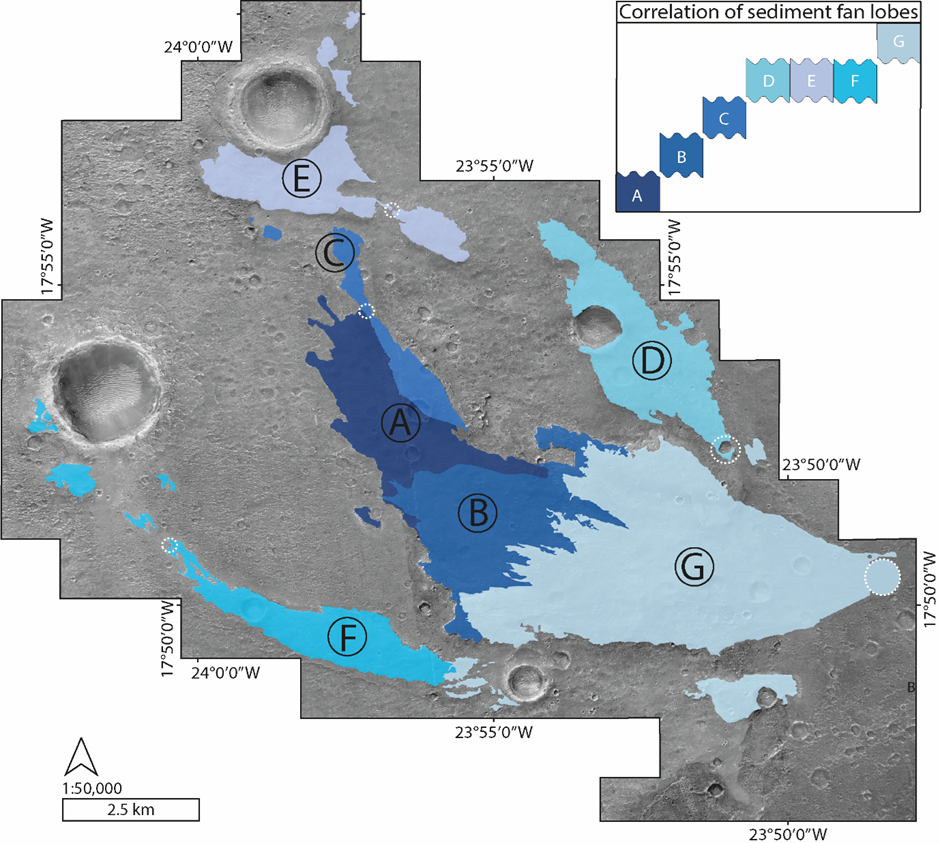
Figure 6: Fan bodies against the orthorectified HiRISE mosaic with correlation of sediment bodies.
How to cite: Roberts, A., Gupta, S., Fawdon, P., Banham, S., Davis, J., and Harris, E.: Reconstructing Depositional Environments of the Sediment Fan in Oxia Planum, Mars, Europlanet Science Congress 2024, Berlin, Germany, 8–13 Sep 2024, EPSC2024-1171, https://doi.org/10.5194/epsc2024-1171, 2024.